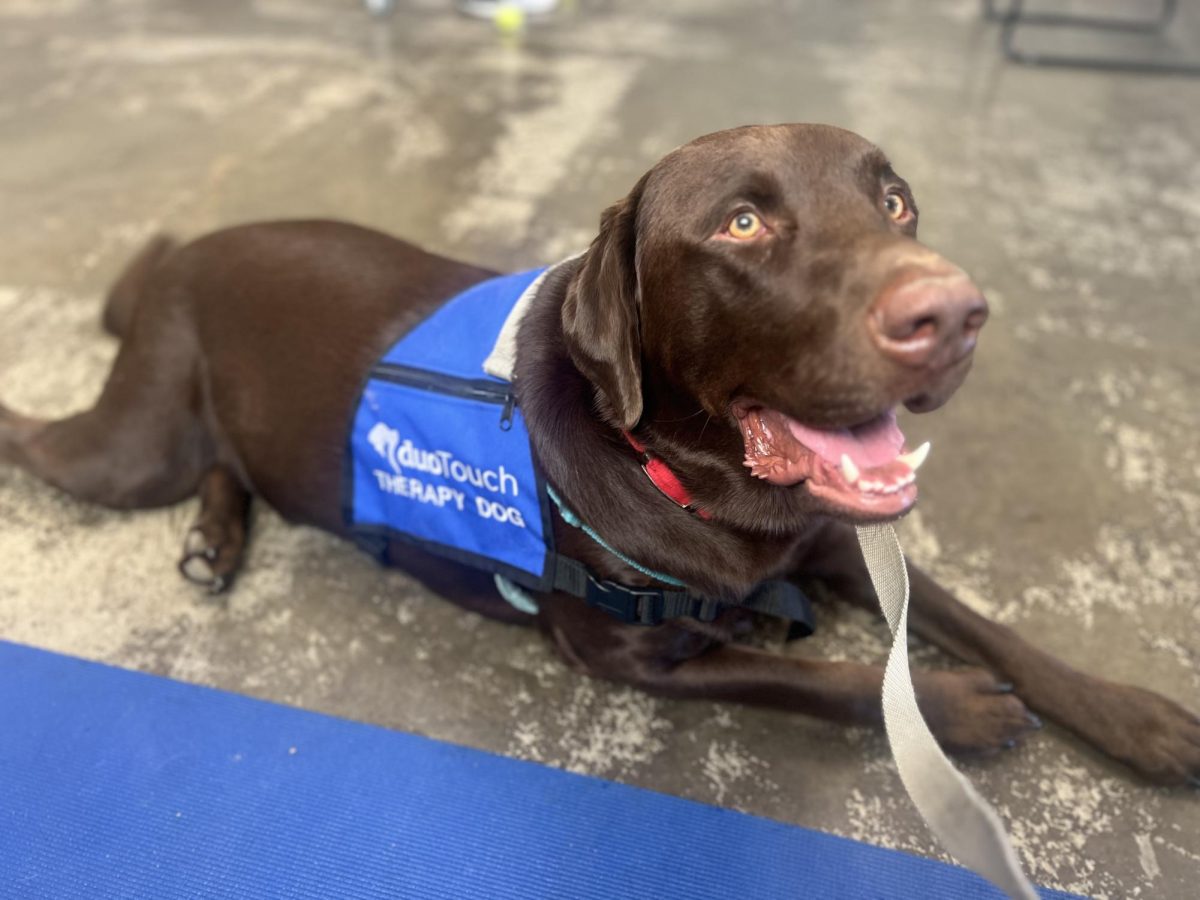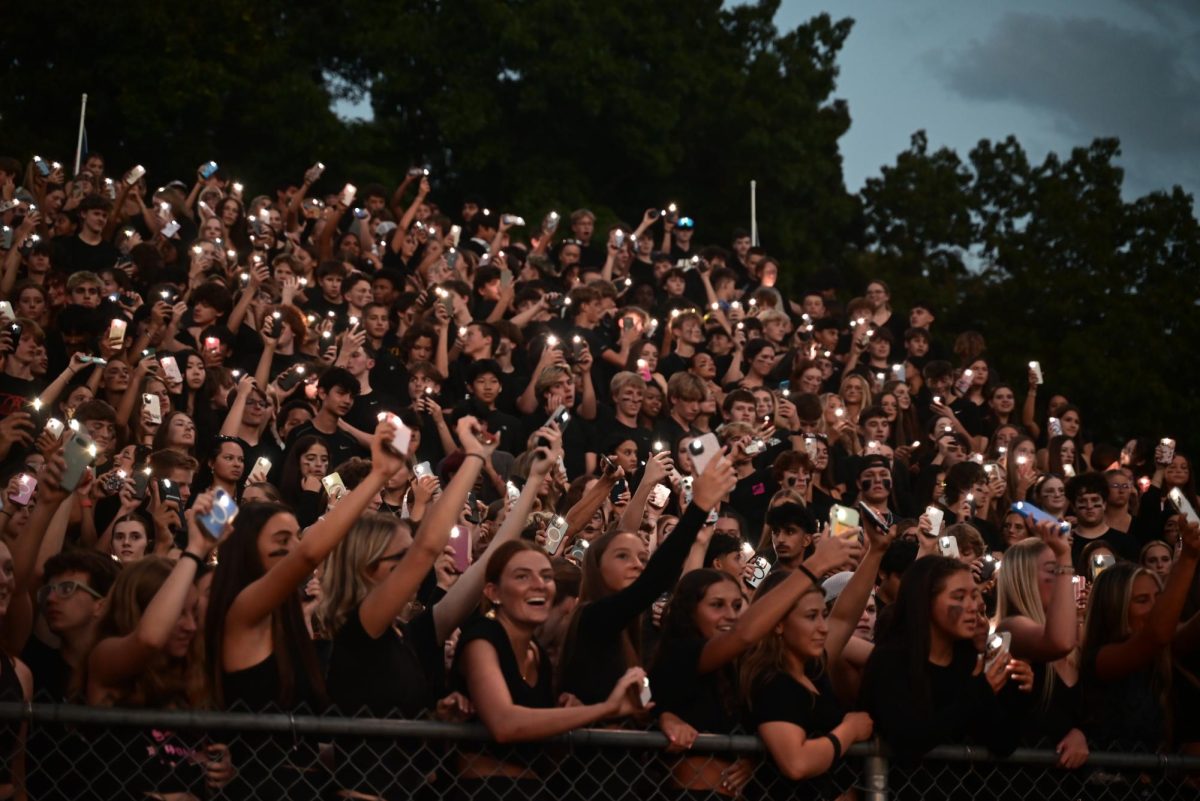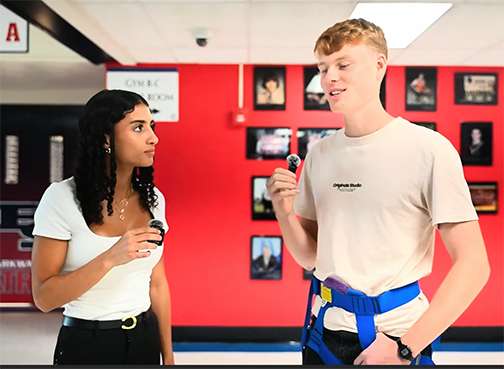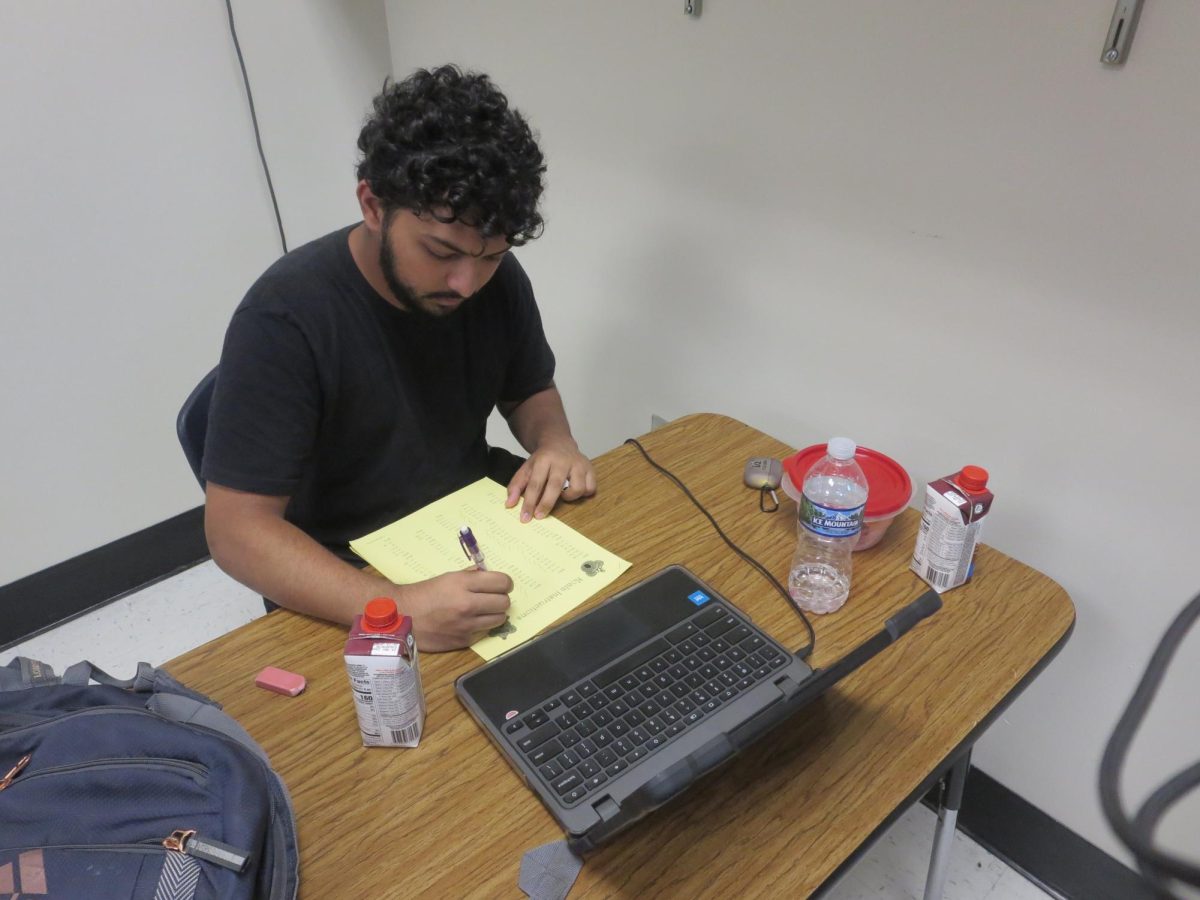Have you ever felt overwhelmed at school and wished for a way to just pause, relax, and reset?
Imagine a fluffy, friendly dog waiting to greet you in the hallway, ready to offer you that moment of calm. In schools across the county, therapy dogs have become beloved companions, and bring joy, calm, and emotional support to students and staff alike.
A therapy dog’s impact goes beyond simply being in the room. According to Darcie Brady, South’s Mental Health Specialist, having a trained calm can help students regulate their emotions.
“Having a calming presence and having a place to destress and regulate and having that available as an alternative,” Brady said.
For the past 3-4 years, South has been bringing a therapy dog, Lucy, to the library once a month during Ac. Lab for students to pet. This initiative has become a regular event, allowing students a chance to reset during busy school days.
Therapy dogs like Lucy, who has been a regular visitor at South’s library during Ac. Lab, create spaces for students to connect. Many students end up talking about their pets or sharing personal stories, creating connections with others they might not otherwise meet.
“Students who do not know each other just sit there and share stories about their own dogs or their pets, and why they love the therapy dog, I see that every time. I see just different students that you’ve never seen together, totally coming together as a group,” Librarian Katie Pendleton said.
However, this year Brady is training her personal pet to be a therapy dog at South. The dog, named Chief, is training through Duo Dogs, which is a national organization that trains dogs to work with people. Brady said Chief is a friendly golden retriever, who has not yet graduated from training. While Lucy and Chief won’t be replacing one another, they’ll continue to offer their unique support to South.
“Typically when they are doing touch therapy, they are supposed to be limited to a 2-hour session, but it depends on how well he does in the environment, and if it is overstimulating. So it would really be on evaluating how well and how he handles it and if he gets stressed out,” Brady said.
Training a therapy dog involves much more obedience, Brady said. She said that Chief’s training covers everything from managing his behavior in crowded spaces to recognizing signs of stress. As Chief’s owner, Brady had to learn dog-handling skills, and a lot of it involves being able to tell when Chief is becoming stressed and advocating for him for breaks or to leave a stressful environment. They also teach grooming and positive reinforcement.
Students agree that interacting with therapy dogs not only helps ease their minds but also builds a sense of connection within the school community.
“It gives me good space to interact and hang out with my friends we will be like, ‘Oh let’s go see the therapy dog,’ freshman Audrey Miller said.
Miller, like many students, finds comfort in having therapy dogs on campus.
“I think it is a great way to help students de-stress from all the school work and it makes me feel happy,” she said.












![With her mom and sister cheering her, senior Maiyah Syed gets recognized on Senior Night for Color Guard, Oct. 10. "It felt pretty good [to be recognized]. I thought it was nice to have all my accomplishments laid out [by the announcer.] [I'm really going to miss] the evening practices and the bonding with the team over everything," Syed said.](https://psouthtreaty.com/wp-content/uploads/2025/10/emilypiccropped-Gavin-Brady-935x1200.jpg)







